In a future fight, control of advanced drones belonging to the U.S. Navy and U.S. Air Force could be passed back and forth between assets from either service as the situation demands. Uncrewed platforms are set to make up the majority of the Navy’s future carrier air wings, with up to 60 percent of all aircraft on each flattop eventually being pilotless.
Navy Rear Adm. Andrew “Bucket” Loiselle provided details on the service’s advanced aviation plans, including new drones and sixth-generation crewed stealth combat jets, and cooperation with the Air Force on these efforts during a panel discussion yesterday at the Navy League’s annual Sea-Air-Space conference and exhibition. These efforts are part of the service’s broader Next Generation Air Dominance (NGAD) program that you can learn about here. Loiselle is currently the director of the Air Warfare Division, also referred to as N98, within the Office of the Chief of Naval Operations.
[…]
n a future fight, control of advanced drones belonging to the U.S. Navy and U.S. Air Force could be passed back and forth between assets from either service as the situation demands. Uncrewed platforms are set to make up the majority of the Navy’s future carrier air wings, with up to 60 percent of all aircraft on each flattop eventually being pilotless.
Navy Rear Adm. Andrew “Bucket” Loiselle provided details on the service’s advanced aviation plans, including new drones and sixth-generation crewed stealth combat jets, and cooperation with the Air Force on these efforts during a panel discussion yesterday at the Navy League’s annual Sea-Air-Space conference and exhibition. These efforts are part of the service’s broader Next Generation Air Dominance (NGAD) program that you can learn about here. Loiselle is currently the director of the Air Warfare Division, also referred to as N98, within the Office of the Chief of Naval Operations.
Navy Carrier-Based Drones Will Be Able To Be Controlled By The Air Force
The future carrier air wings will be 60% unmanned and there is now “unbelievable cooperation” with the Air Force on making that happen.
BYJOSEPH TREVITHICK|PUBLISHED APR 5, 2023 1:01 PM EDT
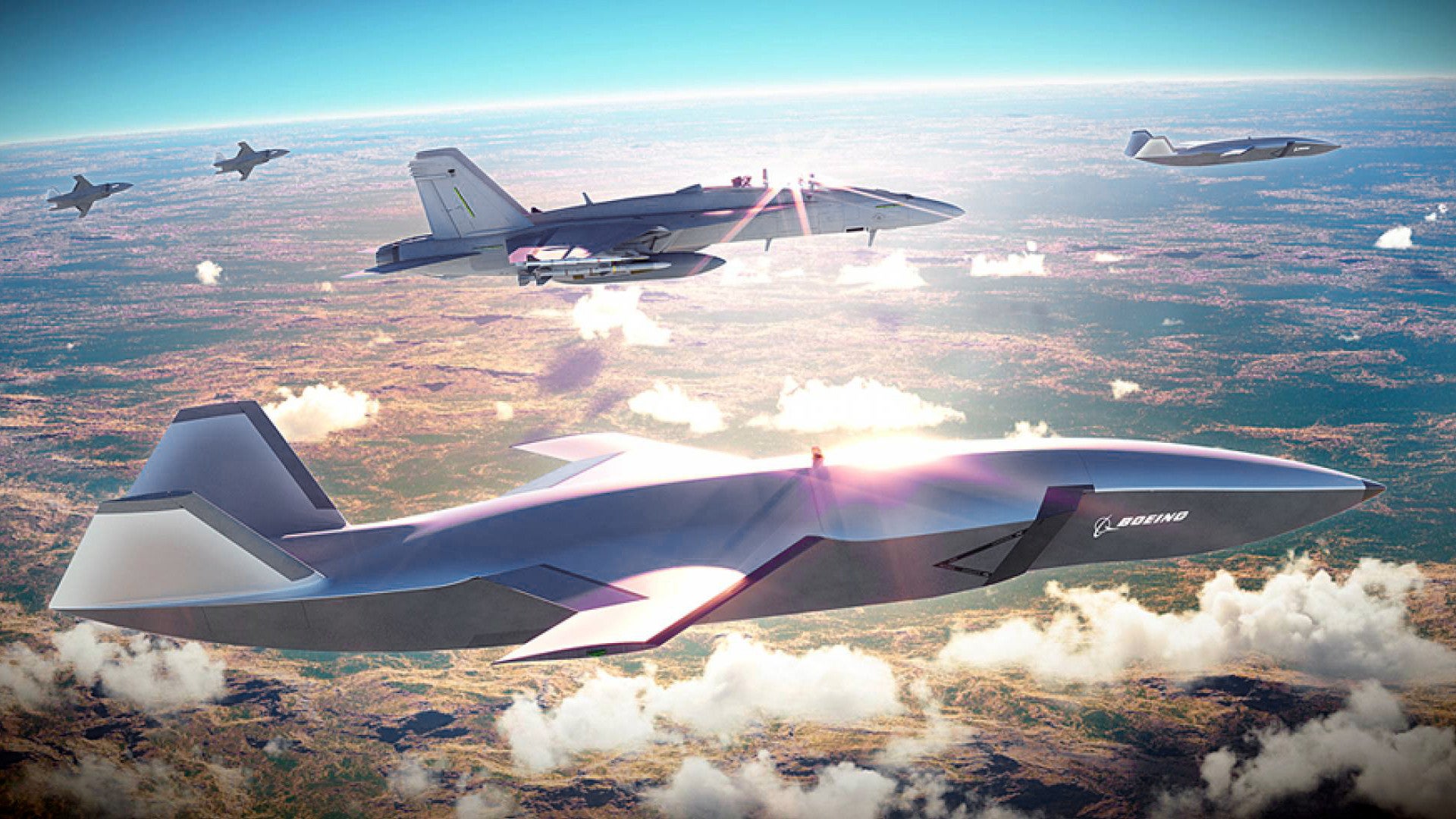
JOSEPH TREVITHICKView Joseph Trevithick’s Articles
In a future fight, control of advanced drones belonging to the U.S. Navy and U.S. Air Force could be passed back and forth between assets from either service as the situation demands. Uncrewed platforms are set to make up the majority of the Navy’s future carrier air wings, with up to 60 percent of all aircraft on each flattop eventually being pilotless.
Navy Rear Adm. Andrew “Bucket” Loiselle provided details on the service’s advanced aviation plans, including new drones and sixth-generation crewed stealth combat jets, and cooperation with the Air Force on these efforts during a panel discussion yesterday at the Navy League’s annual Sea-Air-Space conference and exhibition. These efforts are part of the service’s broader Next Generation Air Dominance (NGAD) program that you can learn about here. Loiselle is currently the director of the Air Warfare Division, also referred to as N98, within the Office of the Chief of Naval Operations.
null
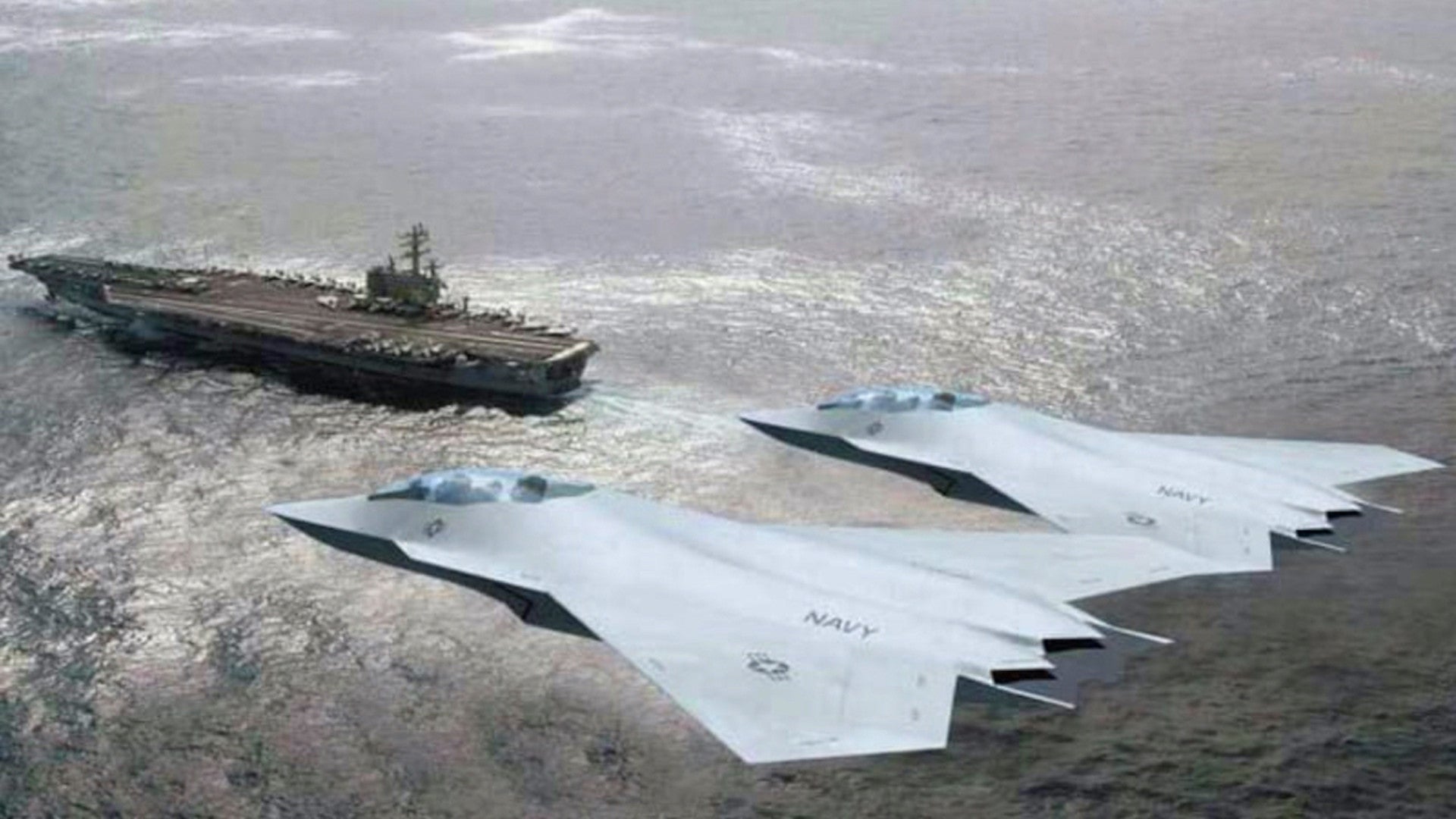
null
“As we looked upon that air wing of the future, we have numerous unmanned systems,” Loiselle said. “You’ve heard talk about CCAs [and] MQ-25.”
The MQ-25 Stingray is an uncrewed tanker aircraft with a secondary intelligence, surveillance, and reconnaissance (ISR) capability that the Navy has been developing for years.
null
CCA stands for Collaborative Combat Aircraft and is a term that originated with the Air Force to describe future advanced drones with high degrees of autonomy intended to operate collaboratively with crewed platforms. Secretary of the Air Force Frank Kendall announced earlier this year that the service had begun doing future planning around a fleet of at least 1,000 CCAs, as well as 200 crewed sixth-generation stealth combat jets, all being developed as part of its own separate multi-faceted NGAD program. The CCA figure was based on a notional concept of operations that would pair two of the drones with each of the 200 NGAD combat jets and 300 stealthy F-35A Joint Strike Fighters.
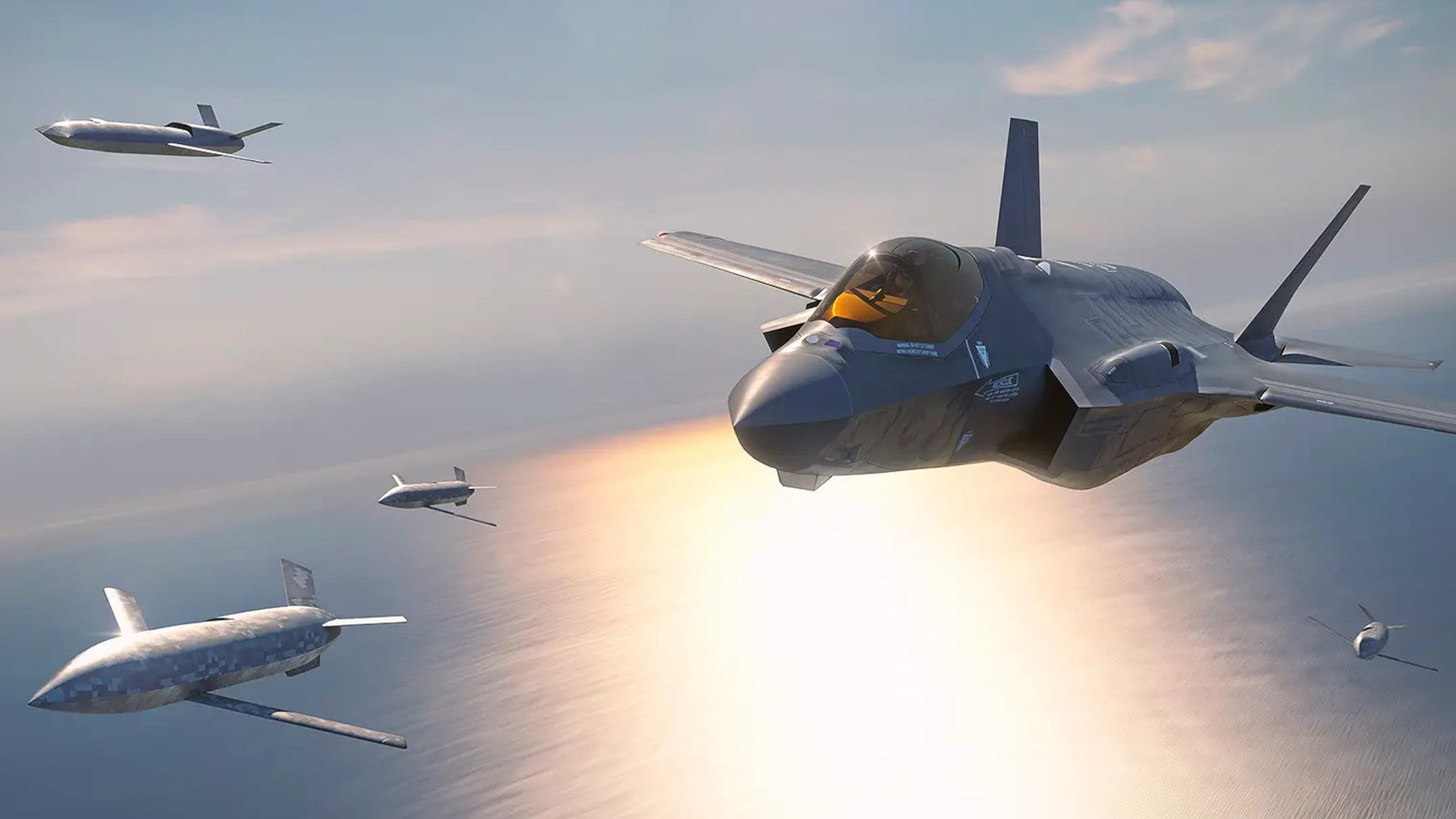
However, the Air Force is still very much refining its CCA fleet structure plans, which could grow to include an even larger total number of CCAs with different types geared toward different mission sets. It’s also still figuring out how it intends to deploy and employ them. The Navy appears to be doing much the same, in increasingly close coordination with the Air Force.
“We’re developing an unmanned control station that’s already installed on three aircraft carriers, and that will be the control station for any UAS [uncrewed aerial systems] that we buy,” Rear Adm. Loiselle added. “[There is] unbelievable cooperation with the Air Force right now in the development of mission systems for both sixth-gen [combat jets] and CCAs… I’m very close to getting a signed agreement with the Air Force where we’re going to have the ability for the Navy to control Air Force CCAs and the Air Force to control Navy CCAs.”
The drone control system in question is the MD-5 Unmanned Carrier Aviation Mission Control System (UMCS), the development of which began adjacent to the Navy’s abortive Unmanned Carrier-Launched Airborne Surveillance and Strike (UCLASS) program. The installation of the UMCS on Navy carriers has also prompted the creation of a new Unmanned Aviation Warfare Center (UAWC) on those ships.
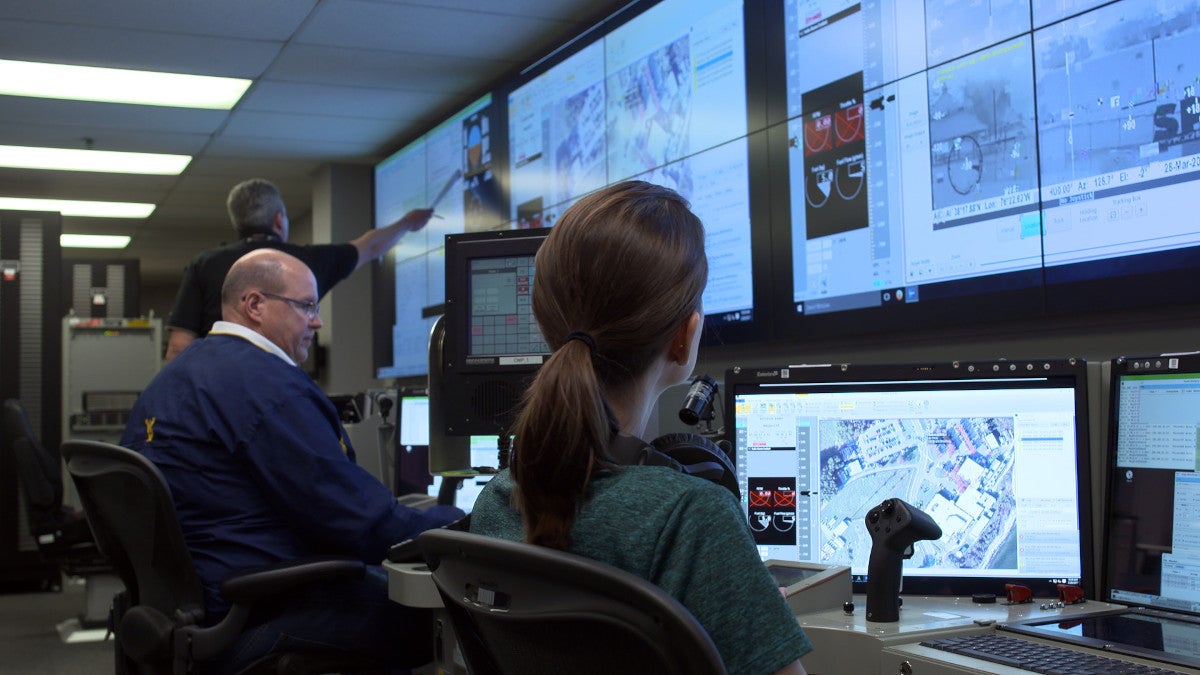
null
The Navy has previously said that the MQ-25 would be deployed first on the Nimitz class carriers USS Dwight D. Eisenhower and USS George H.W. Bush, and the latter ship has been actively used for testing that drone. It was announced last year that the plans had changed and that USS Theodore Roosevelt, another Nimitz class ship, would be the first to host the Stingray.
The expectation is that future CCAs will also be able to be controlled by various aircraft in the course of operations. The Navy has specifically said in the past that one of the core missions for its future sixth-generation crewed combat jet, also referred to as F/A-XX, will be acting as a “quarterback” for drones.
For the Navy and the Air Force, being able to readily exchange control of future drones will be key to ensuring operational flexibility. During the panel discussion yesterday, Rear Adm. Loiselle outlined a broader future naval vision where this capability could be particularly valuable.
[…]
“The bottom line is when we’re building our future force that’s going to be 60 percent unmanned, then we’re going to look different than we do today. And we are no longer going to have a fighting force that has 44 strike fighters on the deck, because that’s incompatible with a 60 percent unmanned air wing,” the rear admiral explained. “So we’re going to have to change the narrative, from 44 strike fighters to how many targets can I get at what range at what time intervals, because that’s the true metric that matters.”
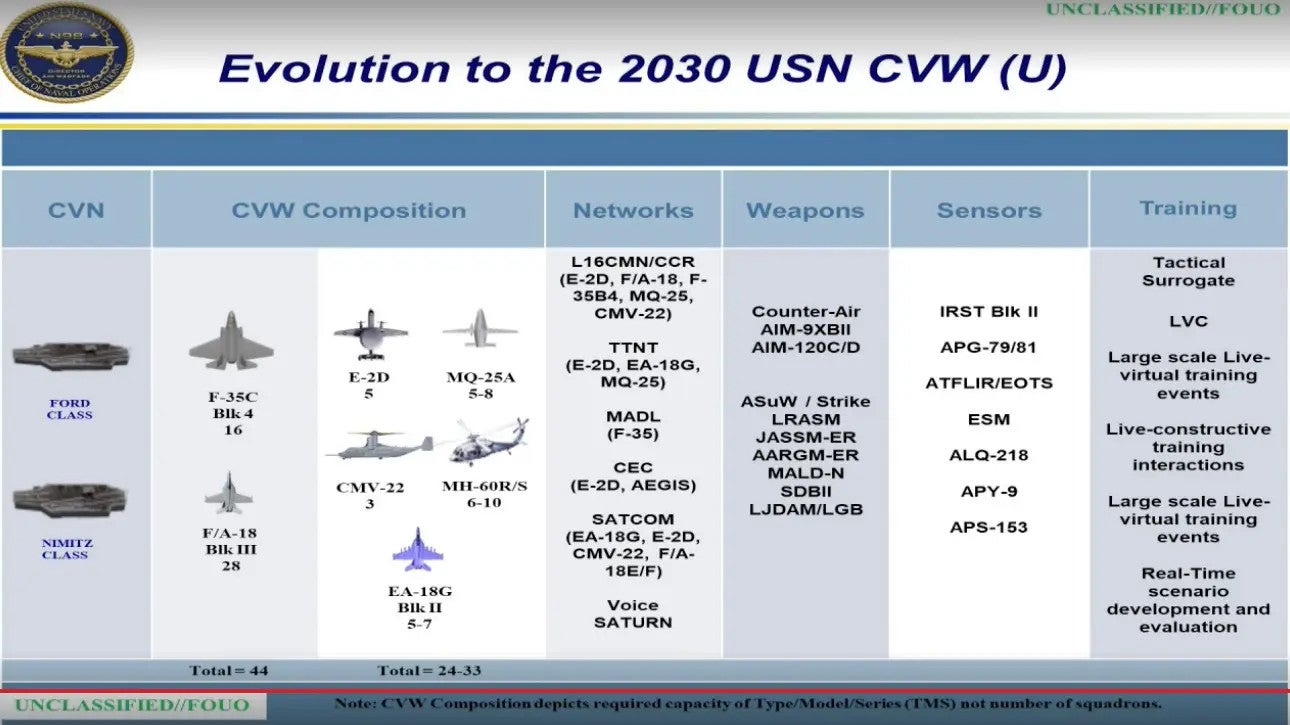
“The type of platform that delivers that ordnance is less important than the ability to do so,” he continued. “So we need to look at the entire portfolio that is present within the carrier strike group and how we generate that effect. Equally, we need to be cognizant of what’s available in the joint force, such that we don’t duplicate capabilities that would work within our part of that plan execution.”
[…]
With all this in mind, carrier strike groups, as well as potentially other naval assets, being able to readily take control of Air Force drones during operations in certain circumstances, and vice versa, could be extremely useful. A Navy carrier air wing or Air Force elements in the same region might be able to provide more on-demand escorts or other support for each other’s crewed platforms, including tactical combat jets and larger aircraft like bombers, tankers, and airlifters. Current and future Air Force assets capable of flying very long distances themselves, such as the forthcoming B-21 Raider stealth bomber, could even take control of Navy uncrewed aircraft using more localized line-of-sight links to help with their immediate missions, too.
null
For instance, long-range Air Force platforms like the B-21 could ‘pick up’ CCAs launched from a carrier operating far forward of any land base. They would then fly their mission into contested airspace with the help of their unmanned wingmen, then return them back to Navy control once they head back out of the high-threat area and towards the carrier’s area of operation. Unmanned tactical aircraft have a significant range advantage over their manned counterparts, which is a factor as well.
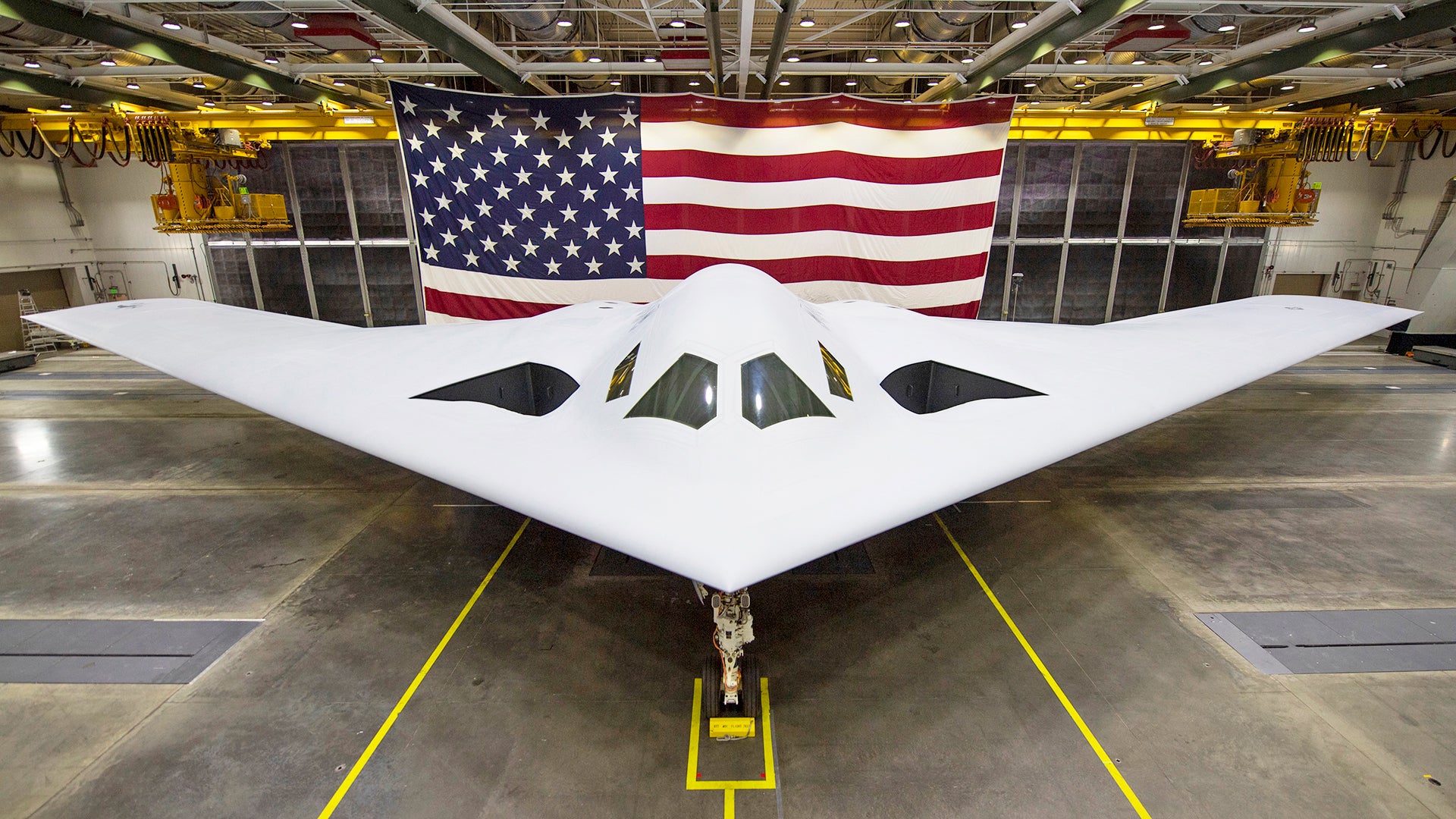
Beyond this, just being able to share fleets when in the air between the services opens up huge possibilities and operational synergies.
[…]

Robin Edgar
Organisational Structures | Technology and Science | Military, IT and Lifestyle consultancy | Social, Broadcast & Cross Media | Flying aircraft
